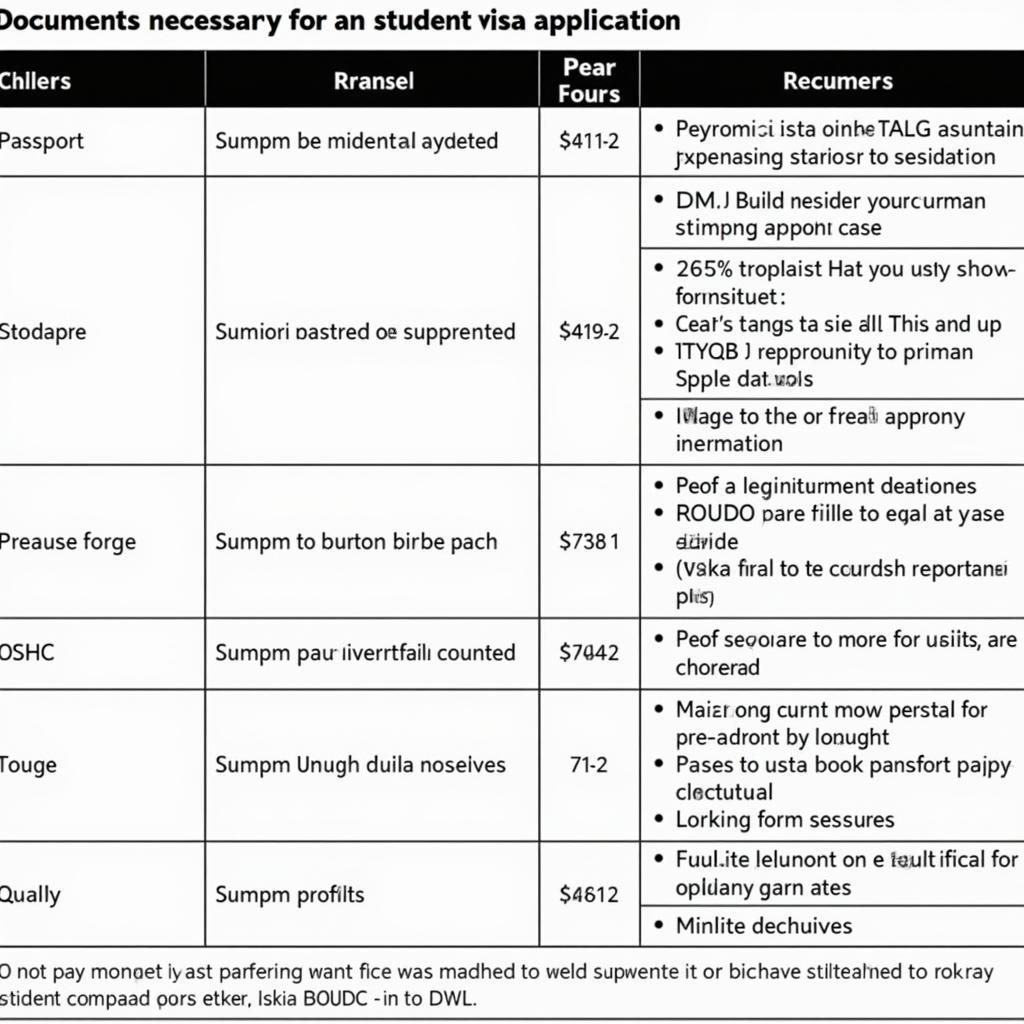Securing a Study Visa For Australia From Pakistan is a significant step towards achieving your academic aspirations. This guide provides a detailed roadmap to navigate the application process, ensuring you have the best chance of success.
Understanding the Australian Study Visa Process
The Australian student visa process can seem daunting, but with proper preparation and understanding, it’s manageable. The first step is selecting a course and institution registered with the Commonwealth Register of Institutions and Courses for Overseas Students (CRICOS). Once accepted, you’ll receive a Confirmation of Enrolment (CoE), a crucial document for your visa application.
Key Requirements for a Study Visa for Australia from Pakistan
Meeting the specific requirements is crucial for a successful application. These include a valid passport, a completed application form, your CoE, evidence of sufficient funds to cover your tuition, living expenses, and travel costs, and proof of Overseas Student Health Cover (OSHC). You’ll also need to demonstrate your English language proficiency through tests like IELTS or TOEFL.  Essential Documents for Australian Student Visa Finally, you must meet the Genuine Temporary Entrant (GTE) requirement, demonstrating your genuine intention to stay in Australia temporarily for study purposes.
Essential Documents for Australian Student Visa Finally, you must meet the Genuine Temporary Entrant (GTE) requirement, demonstrating your genuine intention to stay in Australia temporarily for study purposes.
Meeting the GTE Requirement
The GTE requirement assesses your ties to Pakistan, your academic record, and the potential benefits of studying in Australia. A strong personal statement explaining your study choices and career goals is vital. Evidence of previous academic achievements and your future plans after completing your studies in Australia can strengthen your application.
Navigating the Application Process
The application process is primarily online. You need to create an ImmiAccount, complete the online application form, pay the visa application charge, and attach all required documents. After submitting your application, you’ll likely be asked to attend a biometrics appointment. Processing times vary depending on individual circumstances.
Tips for a Successful Application
Thorough preparation is key to a successful outcome. Start early, gather all required documents meticulously, and ensure your application is complete and accurate. A well-crafted personal statement addressing the GTE requirement is essential. Seeking professional advice from a registered migration agent can also be beneficial.
Post-Visa Approval: What to Expect
Once your visa is approved, you can prepare for your departure to Australia. Familiarize yourself with Australian customs and regulations, arrange accommodation, and plan your travel arrangements. Remember to maintain valid OSHC throughout your stay.
Conclusion: Your Australian Dream Awaits
Obtaining a study visa for Australia from Pakistan requires careful planning and adherence to the guidelines. By understanding the requirements and following the application process diligently, you can significantly increase your chances of realizing your educational goals in Australia. Remember to start your application process early and gather all necessary documents.
FAQs
- What is the cost of an Australian student visa from Pakistan?
- How long does it take to process an Australian student visa?
- Can I work while studying in Australia on a student visa?
- What are the English language requirements for an Australian student visa?
- What is the GTE requirement and how do I meet it?
- Can I bring my family with me to Australia on a student visa?
- What happens if my student visa application is refused?
For further assistance regarding ETS tests required for some Australian universities, please refer to this helpful resource: ets in pakistan.
Need more information? Explore these related articles:
Guide to Choosing the Right Course in Australia
Accommodation Options for International Students in Australia
For any assistance, please contact us:
Phone: +923337849799
Email: news.pakit@gmail.com
Address: Dera Ghazi Khan Rd, Rakhni, Barkhan, Balochistan, Pakistan.
Our customer support team is available 24/7.